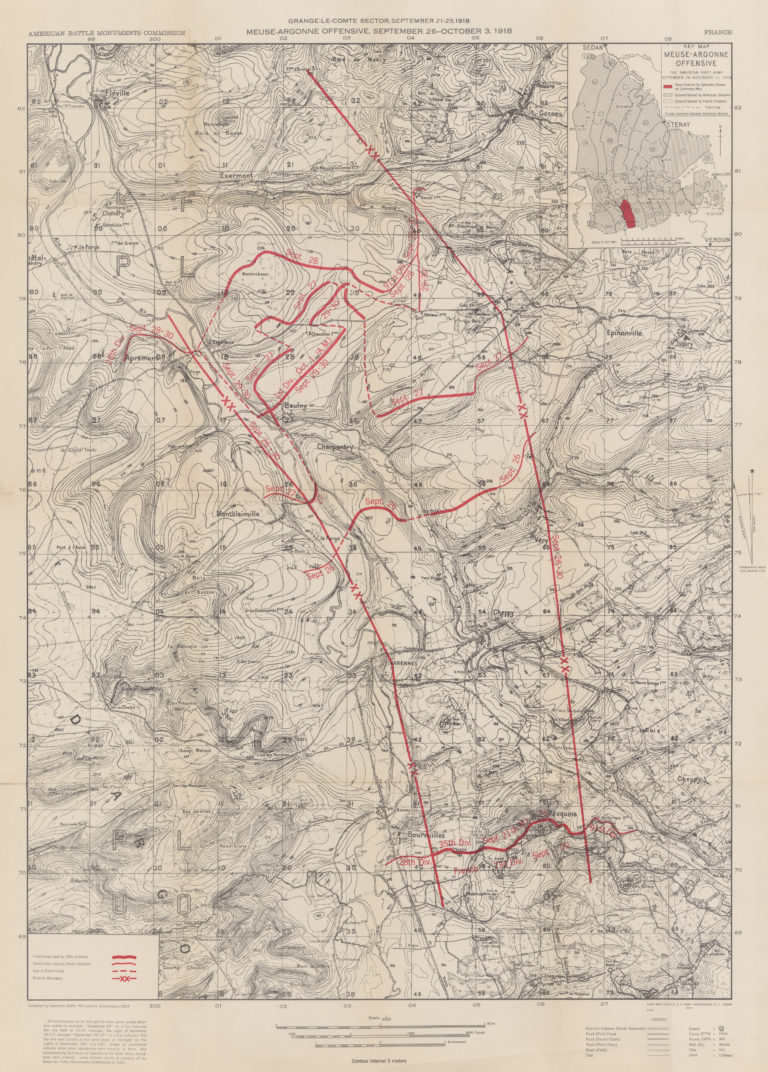

and Allied counteroffensives in the summer of 1918 stopped German advances. The cemetery is closed January 1 and December 25, but is open on all other holidays. The Meuse-Argonne American Cemetery (French: Cimetire Amricain (Meuse-Argonne)) is a 130.5-acre (52.8 ha) World War I cemetery in France. MEUSE-ARGONNE OFFENSIVE LEADS TO ARMISTICE U.S. It is open daily to the public from 9:00 a.m. The following paragraphs, in italic, are a synopsis of the service of the 92d Division in the Meuse-Argonne Offensive. Elements of the First Army east of the Meuse were not to attack during the opening days of the offensive. This cemetery is maintained by the American Battle Monuments Commission. West of the Argonne Forest, the French Fourth Army was to attack in conjunction with the American forces. It also includes the Meuse-Argonne American Memorial. Along the walls of the chapel area are the tablets of the missing which include the names of those soldiers who fought in the region and in northern Russia, but have no known grave.
#Verdun battle meuse argonne windows
Beyond the grave sections is a chapel which is decorated with stained glass windows depicting American units' insignias. The cemetery consists of eight sections behind a large central reflection pool. The cemetery contains the largest number of American military dead in Europe (14,246), most of whom lost their lives during the Meuse-Argonne Offensive and were buried there. It is located east of the village of Romagne-sous-Montfaucon in Meuse. The Meuse-Argonne American Cemetery (French: Cimetière Américain (Meuse-Argonne)) is a 130.5-acre (52.8 ha) World War I cemetery in France. They were deactivated in 1919 with the rest of the 35th Division.Statistics source: ABMC Meuse-Argonne web page After five days of intense battle, they were relieved by elements of the 1st Division and were placed in the Sommedieue sector where they launched harassing attacks on the enemy positions until the Armistice of November 11, 1918, ended the war. Immerse yourself in the history of World War I on this day trip from Paris to Verdun and Meuse-Argonne, the sites of two major WWI battles. The regiment soon participated in the Meuse-Argonne offensive, the largest battle the American Expeditionary Forces waged during the war. They were moved to the Saint-Mihiel sector in September where they served as a reserve for the First Army. In July, the 140th had its first taste of combat in the Gérardmer sector in the Vosges Mountains, where they conducted raids on German forces. The regiment organised and trained in the United States at Camp Doniphan, Oklahoma and then shipped out for France where it began training under British tutelage in June 1918. Additional troops were recruited from Jefferson City, Seymour, Carterville, and West Plains. Companies I, K, L, and M were pulled from Kennett, Sikeston, Cape Girardeau and Poplar Bluff respectively.

Companies E, F, G, and H were recruited from Doniphan, Willow Springs, Richmond, and Dexter respectively. Companies of the regiment were drawn primarily from the southeast of the state Company A hailed from Lexington, Companies B and C were recruited from St. Within the 35th Division they were assigned to the 70th Brigade alongside the 139th Infantry. The new regiment was assigned to the 35th Division.

Then it was disbanded on 25 July 1914.On June 29, 1917, the regiment was reactivated for service in the First World War when it consolidated with elements of the 3rd Missouri to create the 140th Infantry in October 1917. More than 1. Reorganised on 10 July 1901 as the 6th Battalion of Infantry in the Missouri National Guard, it was expanded into a regiment on 23 January 1908. Army launched one of the largest offensives in American Military history, the Meuse-Argonne Campaign of the First World War.


 0 kommentar(er)
0 kommentar(er)
